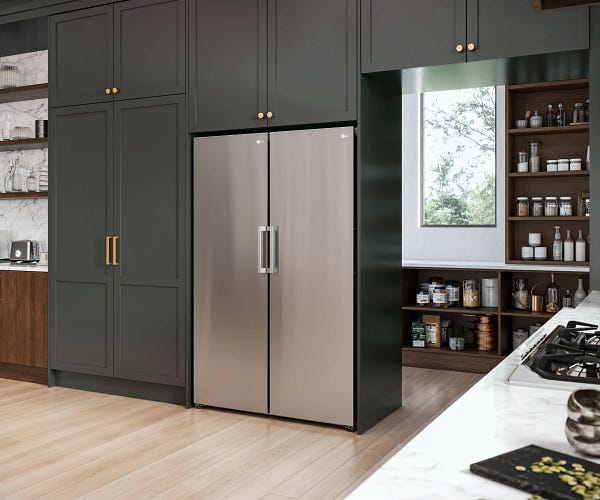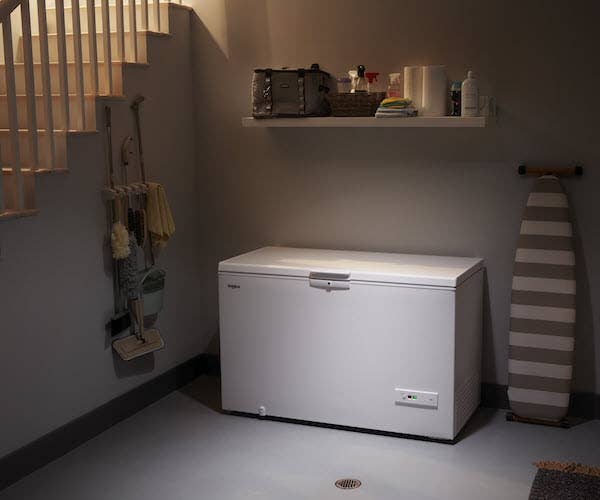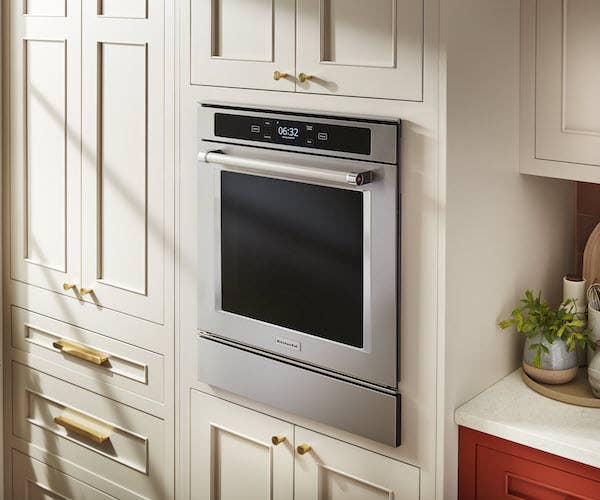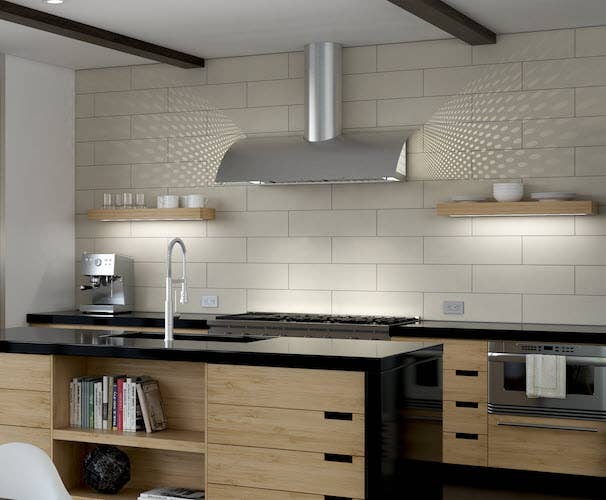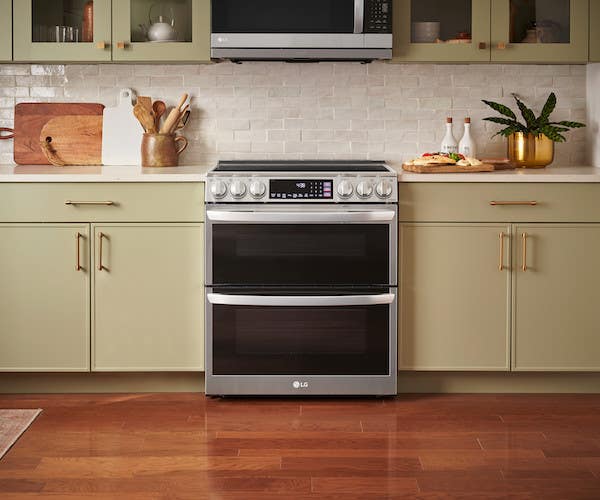

Choose your delivery area
A Guide to Buying Whirlpool Range Hood
Maintain a Fresh Home With Proper Ventilation
Whirlpool ventilation products can suction and either remove or filter smoke, steam and odours from the cooking surface before they affect your home.
COMPARING NON-VENTED AND VENTED OPTIONS
Non-Vented
Non-Vented Recirculation* can be ideal for kitchens in one of two scenarios: the first is where exhaust isn't feasible and the other is where whole home circulation is already provided. Recirculating kits are adept at capturing and filtering smoke, steam and cooking odours and then returning them as clean air.
* where permissible by code. Canadian building codes include requirements for air quality such as ASHRAE 62 “Ventilation for Acceptable Indoor Air Quality". Consult local building code requirements prior to installation of ventilation equipment to determine applicable permits venting conditions and air exchange requirements. Whirlpool products are certified to HVI 915 and 916 in accordance with 9.32.3.10 of Canada's NBC'15.
Vented Exhaust
A system whose purpose is to pull the by-product of cooking - smoke, steam and odours - off the cooking surface and then expel them outside the home. Ventilation products can come with an exterior venting option, which happens to be the most popular type of venting.
Whirlpool offers both non-vented and vented exhaust options.
VENTILATION POWER REQUIRED (CFM)* (pi³/min)*
To measure vent power, you use cubic feet per minute (CFM), which determines the rate that air flows into or out of an area. You might notice that the manufacturer’s CFM ratings include the certified ratings to HVI 916* Airflow Test Procedure or AHAM HRH-2-2019** Standards.
*Home Ventilation Institute (HVI)
**Association of Home Appliance Manufacturers
*Home Ventilation Institute (HVI)
If a specific ventilation product is HVI certified, then the air flow (CFM rate) and noise level (sones) has been tested to determine whether it can perform to the standards under the rated conditions. If your vent meets these standards then it should be HVI certified. To learn more, go to the HVI website (www.hvi.org). You can gain insight into whether your vent of choice can perform based on how you intend to install it, including duct configuration and some speed settings.
**Association of Home Appliance Manufacturers (AHAM)
Verification for vent products is an impartial process to verify a specific product based on the manufacturer’s air flow (CFM) and noise level (sones) under various installation options. Visit the AHAM Certification Program website (www.aham.org) to see if it underwent verification and how it might have fared.*
Choosing the Right CFM
A ventilation unit with a too low CFM rating may not effectively ventilate your kitchen. Incidentally, choosing a ventilation system with a too high CFM level can potentially have two consequences. The first is that it can create negative pressure, meaning air will need to be replenished in some other way. The second one is that air can be removed from places where you don't want air to be removed from.
When calculating the minimum CFM requirements, think about your common cooking techniques. If you often sear, blacken and fry it's recommended to go with a higher CFM rating to ensure it can refresh the air. Furthermore, if you typically use 4 or more burners you may have to invest in a vent with higher CFM rating. Please note that the higher the CFM, the more noise a hood will produce. If you are more of a simmer and sauté home cook, or you often only use 2 burners, you can probably get by with a lower CFM rating.


Gas Cooking Surface
Some manufacturers do not provide a BTU threshold. If this is the case for a vent you want to buy, you can simply calculate what the required CFM is on your own. If you feel like you will often use all the available burners and cook on high heat, just divide total BTUs by 100 to calculate the CFM rating.
Induction & Radiant Cooking Surfaces
Because these cooking surfaces produce far less heat than their gas counterpart, their CFM rating ranges from 200 - 400 CFM. This does depend on how many burners there are and the power. Radiant and Induction cooking surfaces should be paired ventilation of the same width.
UNDERSTANDING SOUND LEVELS
The sound level rating for a ventilation product is vital to consider. If your home has more of an open concept then look for a vent system that is quieter when in operation.
Sound level is measured in sones. A sone is one unit of noise as perceived by someone with regular hearing. A lower sones rating means that a ventilation product is more quiet when running. Additionally, sound requirements are covered as part of Canada’s National Building Code.
Whirlpool products are tested, certified and labelled in accordance with HVI 915 Loudness Testing and Rating Procedure
Product CFM and sounds levels are verified in accordance with HVI 920 - 2015 through the AHAM Kitchen Range Hood Certification aProgram.*
*https://www.aham.org/AHAM/What_We_Do/Certification_Programs/AHAM/What_We_Do/Certification_Programs.aspx?hkey=f21f2894-3b5e-4ae9-bad4-19515b8a6159
Certain Whirlpool ventilation models offer additional technology to reduce the noise via sound insulation. This means you can cook a meal and converse at the same time with greater ease.


SIZE AND CAPTURE AREA
A capture area is key. This refers to the outermost perimeter of the hood bottom that a vent is able to reach to remove cooking by-products. The width of the capture area should match that of the cooking appliance or be even larger.
Whirlpool ventilation products come in 24”, 30”, 36”, and 48”.




Wall Mount Ventilation:
These type of hoods work well for a cooking surface that's situated against a wall. This is where the hood attaches to the wall, allowing air to be vented outside. If this venting type isn't possible, you can buy a recirculating kit. This will filter air and then return it to the kitchen.


Island Mount Ventilation
These are designed to be placed over an island and to seemingly “float” right above the cooking surface ensuring that ventilation is where it needs to be. Air is removed through the ceiling and then deposited outside. If external venting isn't possible or desireable, a recirculating kit can be installed to allow air to be filtered and returned to the kitchen.


Under Cabinet Ventilation
These hoods are also situated against the wall, right below the cabinet space and above the cooking surface. This mounting configuration offers an option that slides back when not in operation to achieve a cohesive look with surrounding cabinets.


Microwave Hood Combinations (MHCs)
Save valuable space with a microwave that's combined with a ventilation system. These microwave hood combination products are installed against an overhead cabinet and a wall, and give owners the option of either recirculating or vented.
A Whirlpool low profile MHC is comprised of a microwave and a hood installed into the undercabinet space and is 10.3" tall. Since you won't need to house your microwave on the counter, you will have more space for food prep or other countertop appliances.


Telescoping Downdraft Ventilation
Achieve a streamlined look by installing this type of ventilation in the counter and right behind a cooktop. Simply push a button to make the slim exhaust fan rise from the counter. Another push of a button sends it back into hiding when not in operation.


Custom Ventilation
Custom options include a vent system mounted inside of a custom cover. The cover is made of either metal, wood, plaster or tile and offers a variety of motor options. If you go with custom, you must buy a blower and hood liner, which can be installed against a wall inside a cabinet.
There are two types of blowers to choose from:
In-line blowers are usually installed in an attic.They are equipped with the same motor as an internal hood blower since noise level isn't a factor as they reside in an area of the house that isn't near the kitchen.
Internal blowers are installed above a cooking space. The blower is accessible and less cumbersome to maintain than other available options.
Hood liners offer overhead lighting to increase visibility and trap grease.
Whirlpool offers all of the above configurations except telescoping downdraft ventilation.


Perimeter Venting
Perimeter venting concentrates the airflow the same way a vacuum cleaner’s crevice attachment does to improve suction. It accelerate air as it is pulled through the slots around the hood’s perimetric cover. It journeys through grease filters to remove as much steam, smoke and grease as possible from the air before it is exhausted from the kitchen.
COLOUR & STYLE
Style matters! Vent hoods are available in either white, black, stainless steel and black stainless steel. Custom hood liners let you customize your hood to create a uniformed look for your kitchen. Browse selections to decide if you want commercial-style or something more modern.
Certain Whirlpool ventilation products have stunning glass canopies, offering a more contemporary style.
INSTALLATION
What vent duct size do you need for your kitchen? Sizes are usually either 3 ¼” x 10” rectangular and 6”, 7”, or 10” round. Most ventilation products can oblige these sizes but it's recommended to confirm with the guide. Installation heights typically range between 24" and 36” based on a particular model. Carefully read the installation guide before starting.
The guide provided by the manufacturer should outline all key information with respect to the installation process and how it can be successfully performed. One important aspect to note is that if the ceilings are 8ft or higher, you may need a duct extension kit so that ducts can vent all the way outside of the home. Kits that come with vents typically only accommodate 8ft ceilings.


